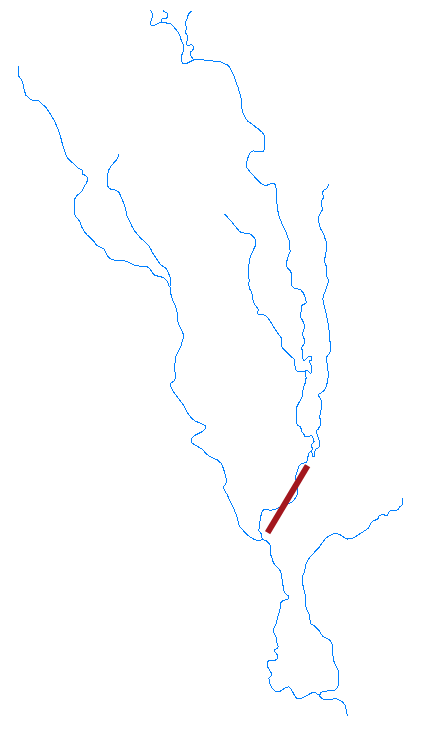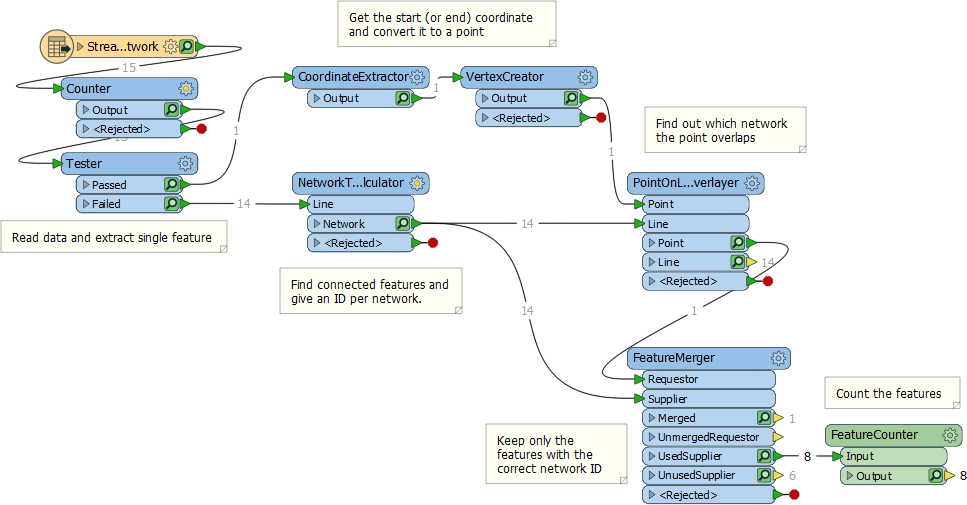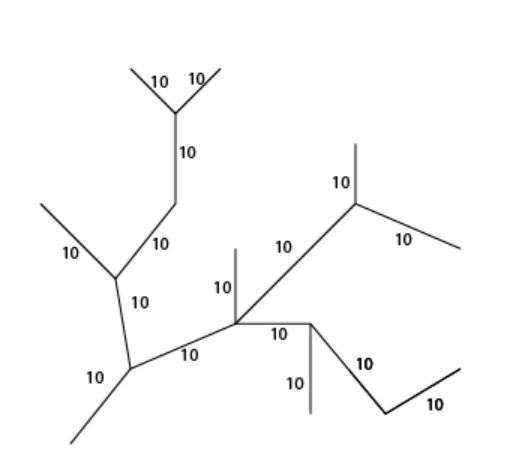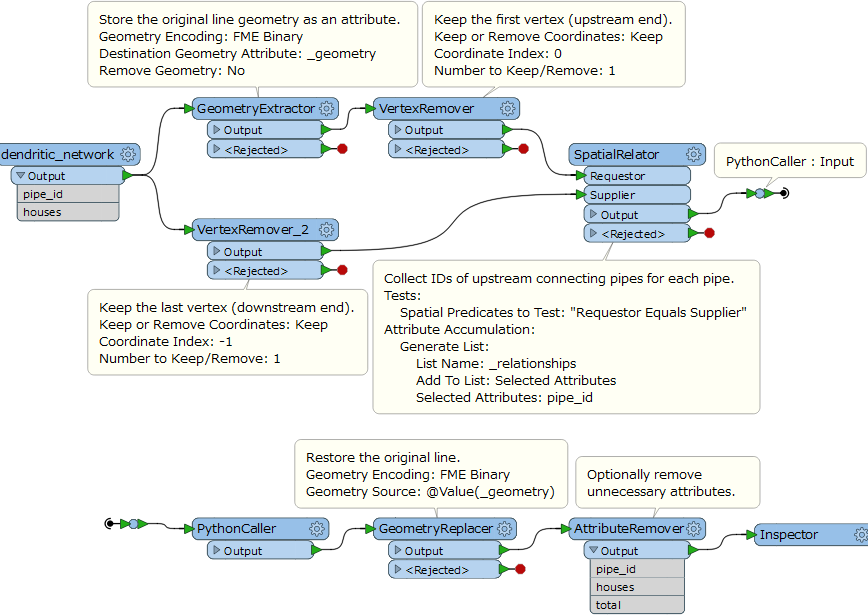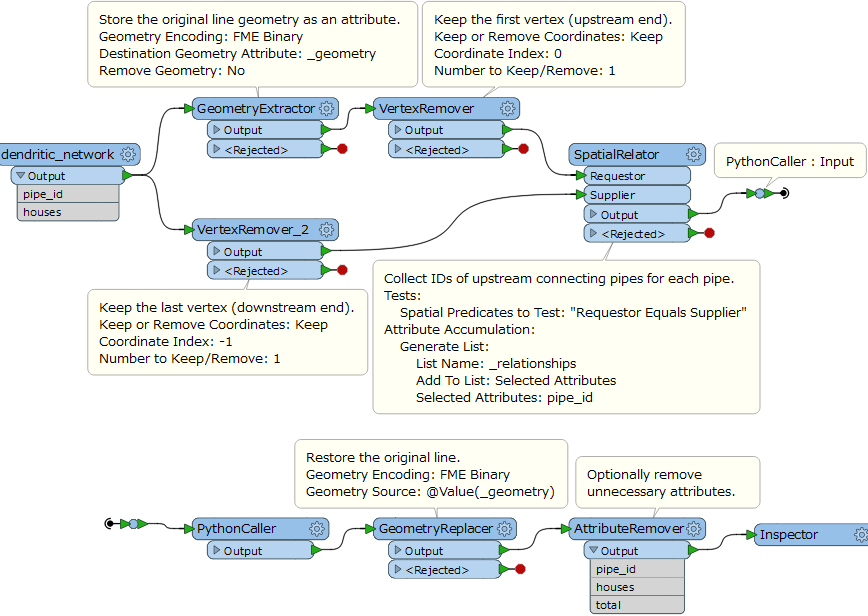I have a working pipe network where I know how many service connections are on each pipe saved as the attribute [_count] on each pipe.
I'd like to count the number of connections upstream of each pipe segment and save it as an attribute on that pipe. Our goal is to prioritize emergency repairs based on the # of properties a particular pipe segment serves.
Most of the examples and transformers are based on the shortest value (time, travel, length, etc). I kind of want the opposite. StreamOrderCalculator could work if I were allowed to 1) use an attribute instead of Stream Order Type, and 2) accumulate that attribute at nodes instead of checking which one is larger or if they are equal. Same with StreamPriorityCalculator. It's looking for shortest path, not longest.
Any suggestions are appreciated.







